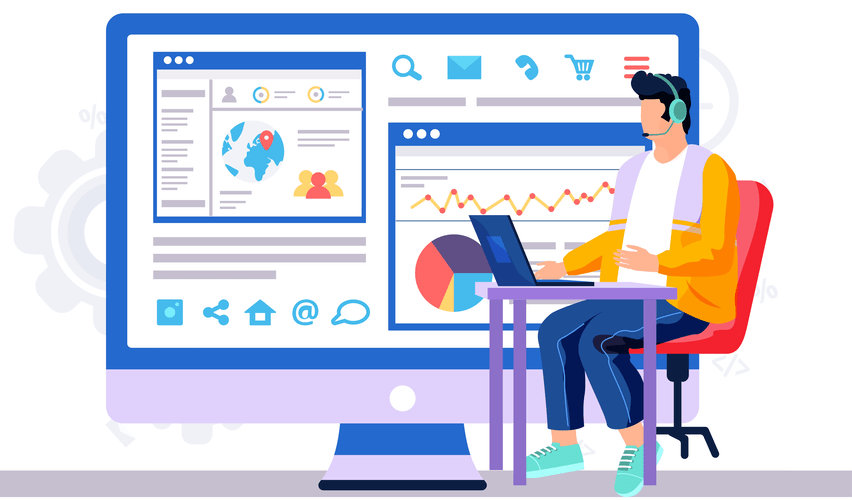Though firms are developing innovative solutions to solve practical industrial problems, HRC still represents a large area of ongoing research before industry-wide adoption can occur. However, advances in AI technologies may enable and accelerate the development and implementation of HRC into the industry. Throughput analysis is aimed at evaluating long-term or short-term productivity of manufacturing systems, which could facilitate system design, performance improvement, and daily operation of production systems. Substantial amounts of research have been devoted to the analysis of manufacturing system dynamics and performance [15–19].
And just as US workers have lamented loss of jobs to automation, the same is now happening in Chinese factories. Although many workers will be replaced by robots in the short term, the end game will be to retrain those workers to perform higher-level design, programming, or maintenance tasks. The real driver, however, will be to develop applications for AI in manufacturing that don’t just automate tasks, but make entirely new business processes feasible—for example, custom configuration of products to individual customer requirements. According to a recent study, about 90% of all robots used today, can be found in manufacturing facilities.
Why AI Is Manufacturing’s Future, But People Are Still Needed
The worldwide AI in the manufacturing market is attributed to growing venture capital investments, rising demand for automation, and rapidly changing industries. In the near future, AI will have an enormous influence on the industrial sector in ways that we cannot yet predict, but which we can already observe. There are two intriguing developments on the horizon that include using AI with IoT to improve manufacturing and AI with computer vision. 3D printing could also completely transform housing development by automating the design and construction processes, dramatically lowering costs and increasing access. When deploying AI, everyone is talking about the cloud because it’s an easy way to access computing resources, which provide virtual equipment by combining CPUs, memory, and disks to create virtual machines, with minimal maintenance. They store your data pretty cheaply, but when you start using computing resources, it becomes a lot more expensive.
Many companies, in their bid to implement QRM, stumble upon the intricacies of redefining their operational structure. The strategy, while robust, often demands a comprehensive cultural shift—one that emphasizes time as a primary metric over cost. In this context, enterprises in the industrial sector looking to maintain their relevance and AI in Manufacturing competitive edge—especially in environments with irregular, changing and unpredictable demands—should explore the Quick Response Manufacturing (QRM) methodology. It is estimated that by 2021, 20 percent of leading manufacturers will rely on embedded intelligence to automate processes and eliminate up to 25 percent of execution times.
Misperception: AI and Automation Will Result in Fewer Jobs
It covers all of today’s cutting-edge technology trends, including autonomous cars, smart connected devices, sensors, computer chips, and other technologies. This metamorphosis was caused by advances in manufacturing technology that has always welcomed new ideas. These technological advances relegated many tedious, rote, and unsafe tasks to machines instead of people. While they eliminated some jobs, however, they also created new ones—many of which demanded more technologically astute operators.
Digitalisation and AI: What’s the future of India’s manufacturing sector? — YourStory
Digitalisation and AI: What’s the future of India’s manufacturing sector?.
Posted: Mon, 23 Oct 2023 03:40:47 GMT [source]
And so, while he’s often frustrated with the pace of progress, AI’s slow burn may actually be a blessing. “There are still major breakthroughs that have to happen before we reach anything that resembles human-level AI,” Russell explained. On a far grander scale, AI is poised to have a major effect on sustainability, climate change and environmental issues. Ideally and partly through the use of sophisticated sensors, cities will become less congested, less polluted and generally more livable. Roughly 44 percent of companies are looking to make serious investments in AI and integrate it into their businesses.
AI in Manufacturing: How It’s Used and Why It’s Important for Future Factories
The images captured in unstable lighting conditions are pre-processed with Laws and Sobel filters to extract features, which are then fed to an SVM classifier enhanced by pyramid analysis. The proposed technique reaches a texture classification accuracy of 98% while satisfying the computation time requirements in a massive production setting. Recently, LSTMs have also been investigated in conjunction with model-based techniques, such as particle filters (PF), in order to alleviate the limitation of insufficient observations for degradation model parameter estimation.
Global spending on public cloud services is forecast to increase 20.4% in 2024, and similarly to 2023, the source of growth will be combination of cloud vendor price increases and increased utilization. QRM has been championed as a solution for reducing lead times and catering to low-volume, high-variety markets. How recent developments are helping to ensure continuity, manage costs and mitigate risks.
Generative Design
However, this is limited by the model’s ability to reflect reality with a high fidelity. In the area of HRC, many AI technologies are being used to successfully aid in the communication of intent between human and robot, based on voice, gesture, gaze, and explicit commands. As AI continues to evolve and advance, understanding and interpreting the output of AI tools and related technical details become increasingly exclusive to data scientists and similar professionals with specialized skills in this domain. This highlights a significant challenge of AI in manufacturing, namely the importance of proper interpretation of AI analysis to decision-makers who may not be experts in AI. Without a proper grasp of the analysis that relates to the fundamental physics, users would have no basis to trust and accept the analysis results. Since manufacturing operations are based on what is known physically, not on what might probabilistically occur as indicated by AI models, more transparent, physics-guided process models are required.
- “There are still major breakthroughs that have to happen before we reach anything that resembles human-level AI,” Russell explained.
- On the subject of which, emulating the human brain is exceedingly difficult and yet another reason for AGI’s still-hypothetical future.
- Although simulation (e.g., Refs. [41,46–49]) is a typical source for training data, it suffers from the disadvantage that data might be biased if the simulation is incapable of representing real operations.
- Joshi is an artificial intelligence researcher, the author of eight published books and a TEDx speaker.
- In this work, a learning approach is developed based on symbolic AI (inductive logic programming, or ILP) for task execution in cognitive robots.
In these publications, the focus was on the survey of the techniques themselves instead of the requirements derived from the manufacturing system. Several other review papers have focused on specific aspects in manufacturing, providing analysis at a more granular level with support from more detailed examples. [11,12] discussed AI for machine condition monitoring and fault diagnosis, while Ref. [13] provides a comprehensive review of AI in the emerging field of human–robot collaboration (HRC). Those models have to be trained to understand what they’re seeing in the data—what can cause those problems, how to detect the causes, and what to do.
How Can We Balance Innovation and Humanity?
Generative design is a bit like the generative AI we’ve seen in technologies like ChatGPT or Dall-E, except instead of telling it to create text or images, we tell it to design products. Robots have been used to automate manual tasks in factories and manufacturing plants for decades, but cobots are a relatively new development. What makes them different is that they are designed to work alongside humans in a safe way while augmenting our abilities with their own. In the webinar, Rick described AI use cases featuring several manufacturers he has worked with including Precision Global, Metromont, Rolls-Royce, JTEKT and Elkem Silicones. Since 2017, Delta Bravo has worked on about 90 projects and has learned what works best and produces significant return on investment (ROI), especially for smaller manufacturers.

Over the decades since robots were first introduced into industrial environments, manufacturers have sought to gain ever more efficiencies and capabilities from these significant capital investments. Simultaneously, the role of the human operators and the nature of the interaction with robots and robotic systems have evolved in conjunction with the increasing functionality and application space where they have been installed. These benefits are driving manufacturing firms to move their human–robotic systems from one of coexistence toward collaboration. Smart manufacturing seeks to increase factory productivity and the efficient utilization of resources in real-time [40]. To achieve these objectives, manufacturing systems need to transform large amounts of data into manufacturing knowledge and useful actions in order to become more responsive to market changes and random disruption events.
Supply Chain Logistics
AI projects improved equipment uptime, increased quality and throughput, and reduced scrap. Rick identified key drivers for successful AI implementation, potential pitfalls and best practices and shared some pro tips. Jonathan Weinberg is a freelance journalist and writer who specialises in technology and business, with a particular interest in the social and economic impact on the future of work and wider society. His passion is for telling stories that show how technology and digital improves our lives for the better, while keeping one eye on the emerging security and privacy dangers. A former national newspaper technology, gadgets and gaming editor for a decade, Jonathan has been bylined in national, consumer and trade publications across print and online, in the UK and the US. However, Grant Caley, CTO, UK&I at NetApp, explains that once it’s up and running, a major positive of AI for manufacturing is that by increasing the efficiency of the supply chain, capital can then be freed up for investments and R&D.






